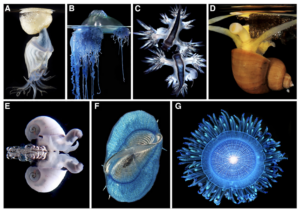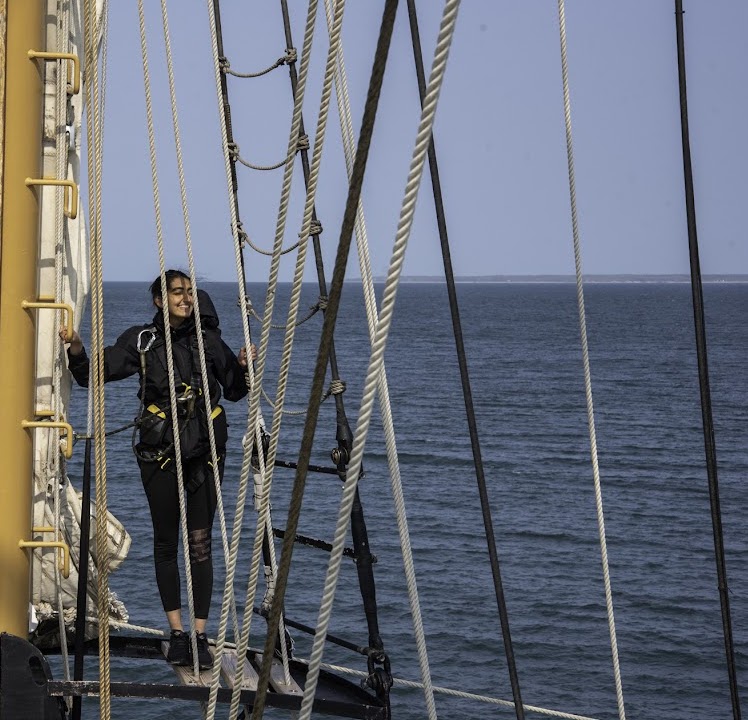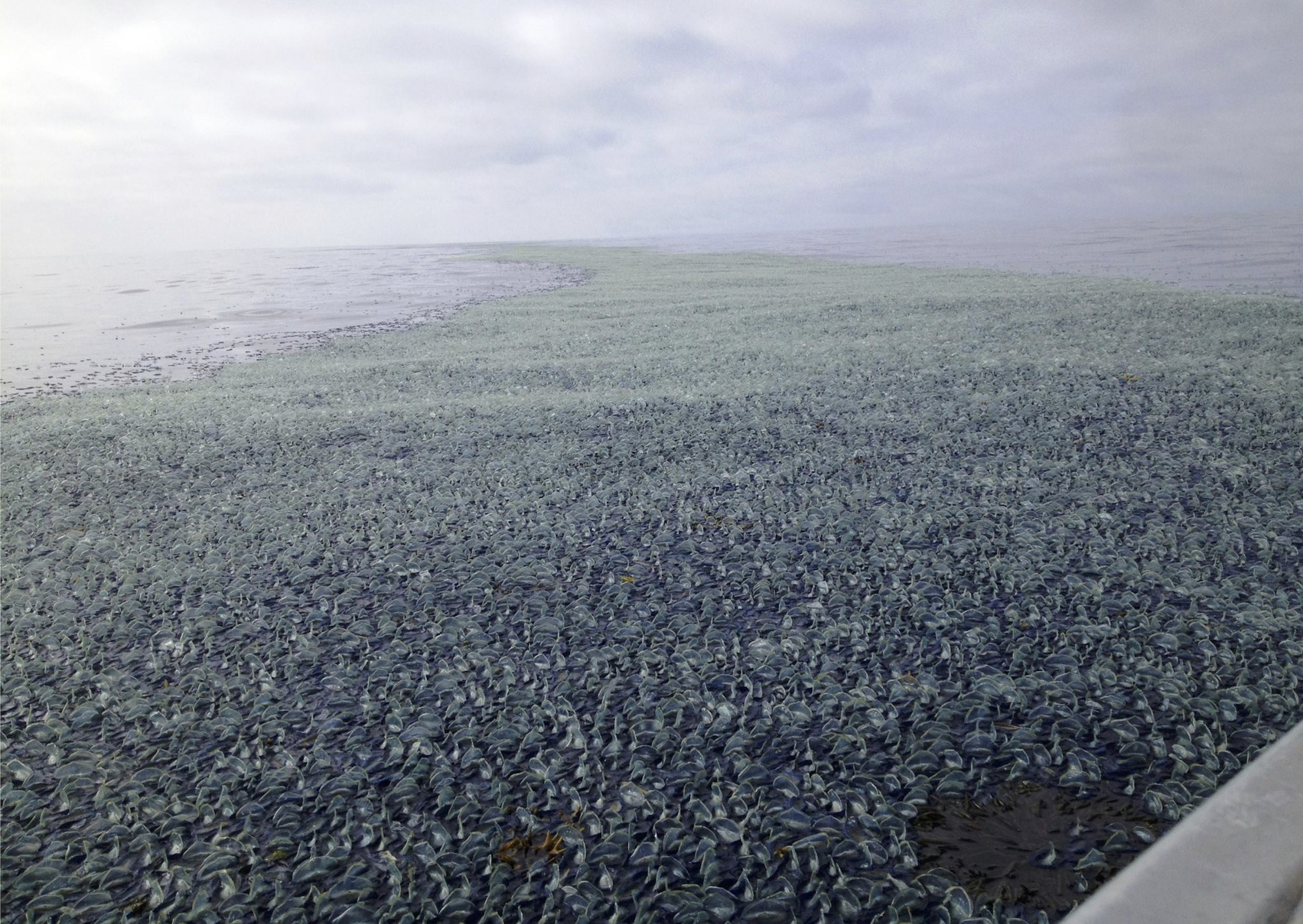[ad_1]
Anthony, Colin J., Bastian Bentlage, and Rebecca R. Helm. “Animal evolution at the ocean’s water-air interface.” Current Biology 34.1 (2024): 196-203.
The vast ocean is often divided into two zones – the pelagic, or water column, and benthic, or seafloor – which excludes an interesting third, the nektonic zone, or the ocean surface. The floating organisms found at this air-sea interface, collectively known as the neuston, have recently been a topic of interest and are being studied for their unique morphologies and ecologies.
In 1958, Savilov, a Soviet scientist, hypothesized that the floating species that make up the neuston evolved from not pelagic ancestors, but benthic ancestors. He proposed that the floating structures were derived from the structures that their benthic ancestors used to attach to the seafloor. This hypothesis came from the idea that the nektonic zone is more similar to the benthic zone that it is to the pelagic zone.
66 years later, Anthony et al. (2024) aimed to test this peculiar hypothesis by evolutionarily tracing the neuston back to their roots.

Feeding and Reproduction
Using molecular data and phylogenetic analysis, the authors found that the nektonic organisms have similar feeding preferences and reproductive strategies to their benthic ancestors. For example, floating barnacles and cnidarians feed on small zooplankton and fish, much like their closely related benthic species. They also find that benthic molluscs specialized to prey on cnidarians which may have enabled their evolution into the neuston.
Floating organisms in the neuston have complex life cycles – where their larvae are dispersed in the ocean before they metamorphose into their adult floating forms at the ocean surface. This is similar to benthic life forms which have larvae that disperse in the pelagic ocean to eventually attach to a substrate or the seafloor. This can be seen in the floating hydrozoan polyps of the By-the-Wind Sailor, Velella velella, and the Blue Button, Porpita porpita.
Floor to Float
Three cnidarian species occupying the nekton – Porpita, Vellella, and Physalia – are characterized by their gas-filled chambers which are made out of chitin and are used to float on the ocean surface. The authors find that the location of this float and their chitinous material resemble the perisarc, or the chitinous pedestal benthic organisms use to attach themselves to a substrate or the sea floor.
Nektonic molluscs such as Violet sea snails, Janthina janthina, use gas-trapping mucus secretions to form bubble rafts and float. The authors state that these bubble rafts are a modification of structures benthic molluscs use to anchor their eggs to the seafloor or a substrate.
The only nektonic species without a float are the Glaucidae nudibranchs or Blue Sea Dragon slugs. Their ancestors moved along the substrate using a muscular foot which this species now uses to glide along the water-air interface at the ocean surface.
Through this work the authors shed light on Savilov’s 66-year-old hypothesis – finding that the neuston did indeed evolve from ancestors that were substrate-attached but not necessarily to the seafloor. This means that the nektonic organisms may be derived from benthic organisms and other organisms that aren’t benthic but still attach to a substrates in the pelagic zone. Future work on finding nektonic hotspots and successfully rearing nektonic organisms in labs will be important to understand this unique ecosystem.

I am a PhD student at the University of Chicago and the Marine Biological Lab, currently studying germline development and regeneration in the amphipod crustacean, Parhyale hawaiensis. I did my undergraduate degree in India and did my Masters in Oceanography at the University of Massachusetts (during which I participated in multiple month-long research cruises out in the Pacific and Atlantic Ocean!). I am broadly interested in integrating ecology with developmental biology in marine organisms and I hope to comprehend the fundamental interconnectedness of the mysteries that swim in the Earth’s oceans. I am also an illustrator and a PADI certified diver.
[ad_2]
Source link

